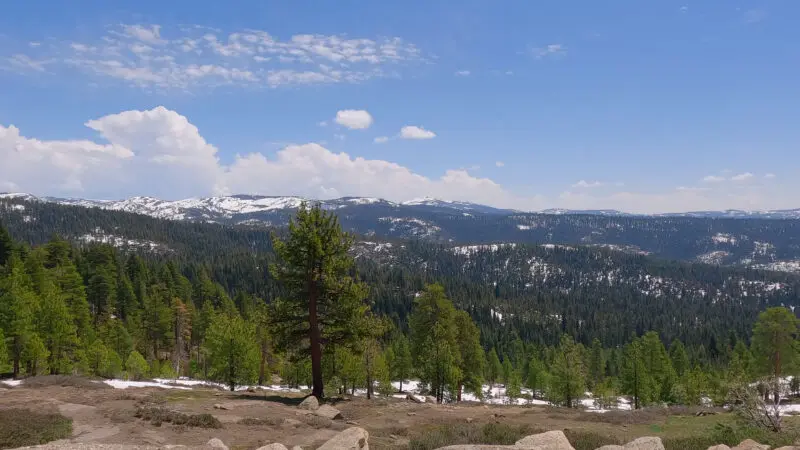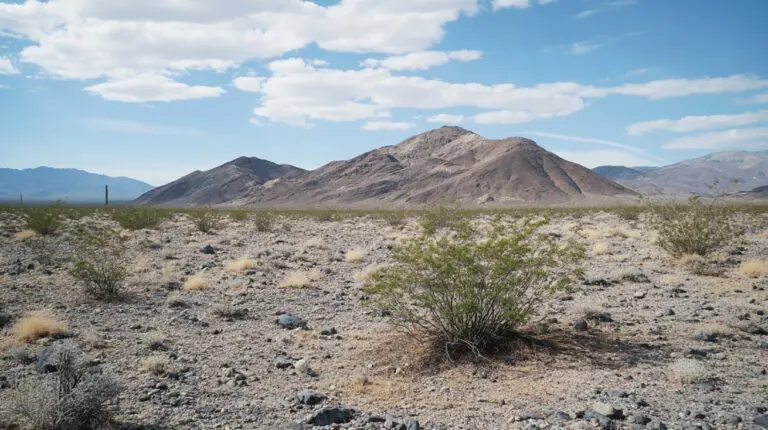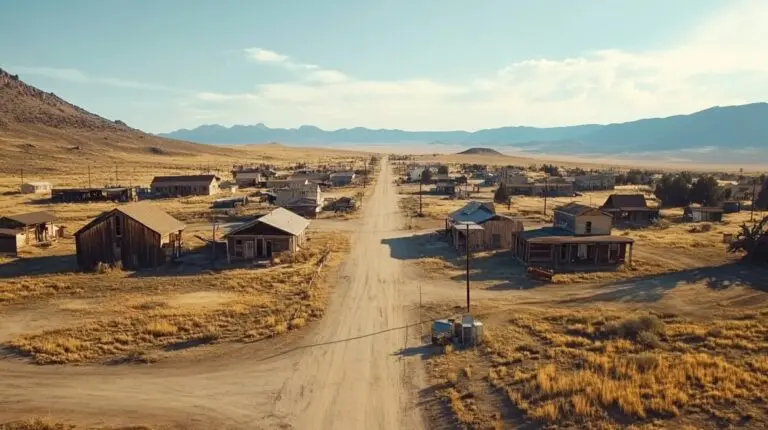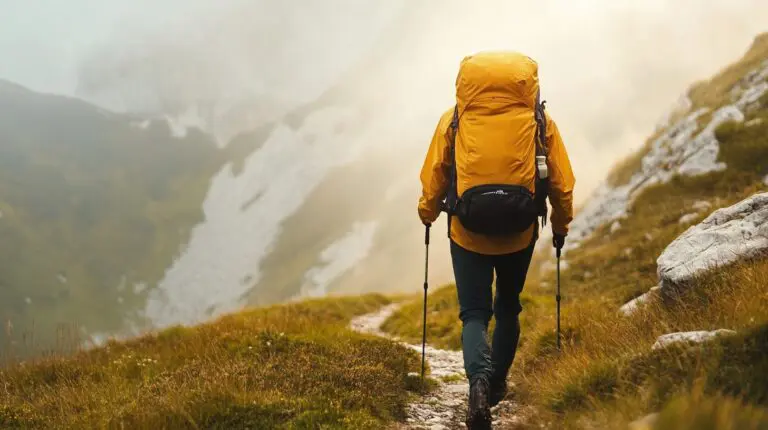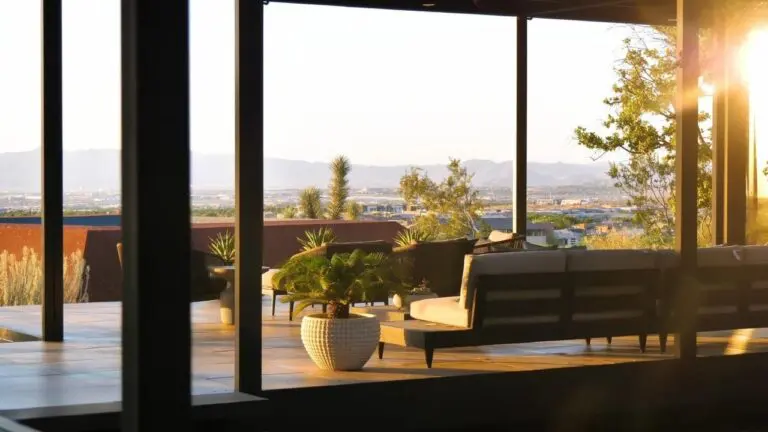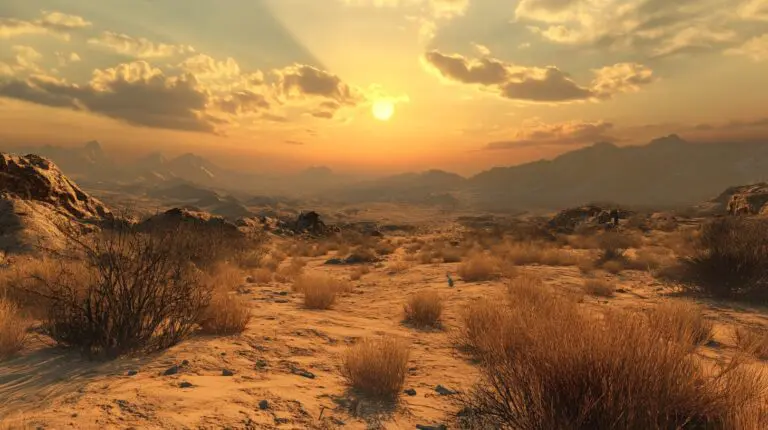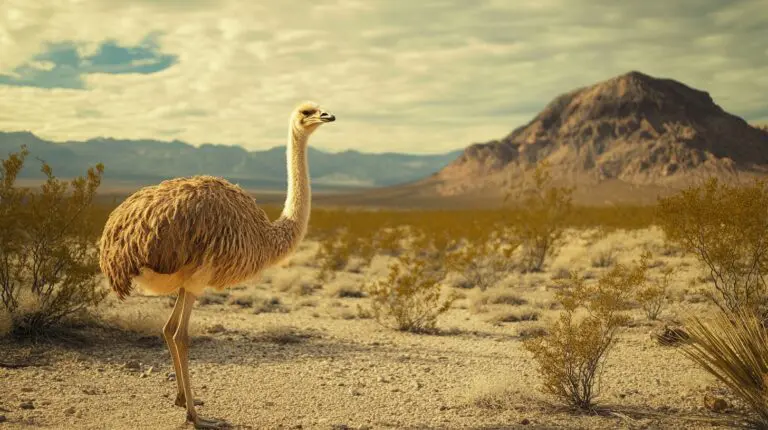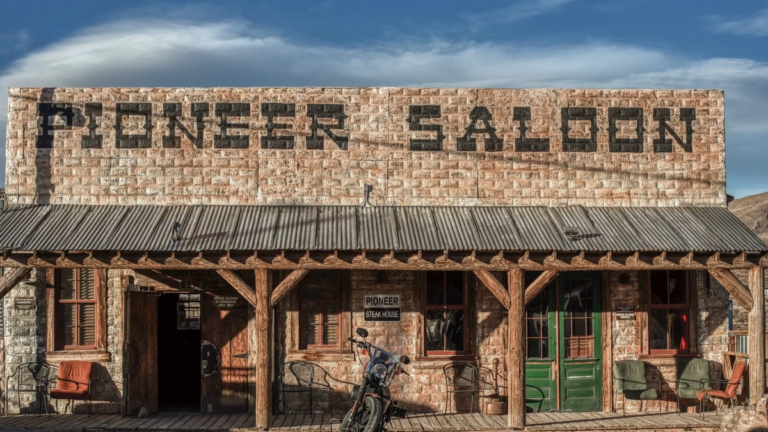Tucked away in San Bernardino County, California, about fifteen miles southwest of my new home in Primm, lies a small, unincorporated community that goes by the name of Mountain Pass.
Perched over 4,700 feet above sea level, this place is literally the highest point on Interstate 15 in California. It’s fascinating to think that it stands more than 2,000 feet above the Ivanpah Valley floor.
Living here in the Mojave Desert, you’d expect endless arid landscapes, but Mountain Pass is an exception. Its elevated location means it gets a bit more rainfall than the valleys below, and the temperatures are somewhat cooler.
This little twist of climate supports a richer tapestry of plant life; you’ll find Creosote bushes, Yuccas, and Joshua Trees thriving here.
Just a stone’s throw from this hidden gem is Nipton, a peaceful community that mirrors the serene beauty and rich history of the vast desert landscape.
Relief from The Desert Heat
Summers are surprisingly mild for the desert, with daytime temperatures hovering around the 90s, while evenings cool down to the 60s. It’s a refreshing change from the scorching heat I was bracing myself for.
Winter brings another layer of surprise with daytime highs in the 50s and nights that dip below freezing. The landscape even dresses in white occasionally, as Mountain Pass sees about nine inches of snow each year.
And when it comes to rain, this place gets about eight inches annually, which is three more than Primm.
Rare Earth Minerals Mine
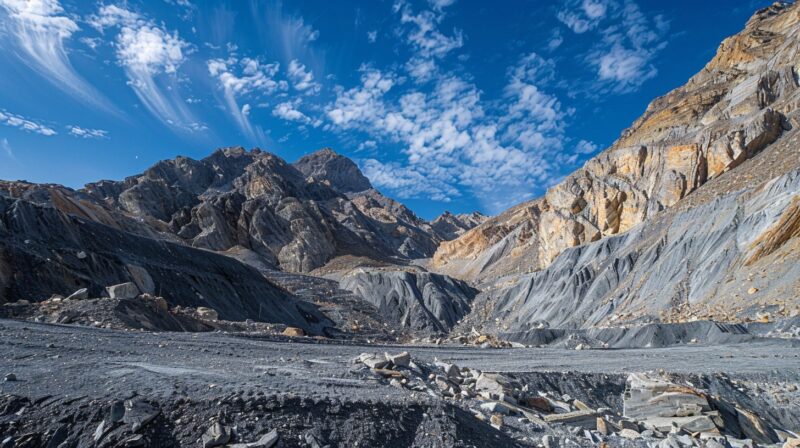
I’ve learned that this area is particularly rich in a group of minerals known as rare earth elements (REEs). These aren’t the minerals you might remember from a high school science class; they are special, each playing a critical role in various high-tech applications.
One of the most prominent minerals extracted here is bastnaesite, a fluorocarbonate mineral that is a significant source of rare earth elements. It’s fascinating to discover that bastnaesite from Mountain Pass is a key provider of cerium and neodymium.
Cerium is widely used in catalytic converters and glass polishing, while neodymium is crucial for making powerful magnets found in electric vehicle motors and wind turbines.
Moreover, Mountain Pass is known for its deposits of monazite, which contains lighter rare earth elements and is used in everything from refining crude oil to manufacturing electronics and producing high-strength metals used in aircraft engines.
The Clark Mountains
Mountain Pass sits at the southern edge of the Clark Mountain Range. The range extends for about fifteen miles in a southwest–northeasterly direction.
The Mountain Pass area is an interesting departure from the valley floor offering different scenery, plant life, and high mountain peaks.
If you love hiking or climbing, the area is well worth a visit!
Wildlife in Mountain Pass
- Birds: Species such as hawks, owls, and songbirds, which are adapted to the high desert environment.
- Small Mammals: Including rodents and perhaps occasional sightings of larger mammals like coyotes.
- Reptiles: Lizards and snakes that are typical of the Mojave Desert.
Birdwatchers and wildlife enthusiasts will find Mountain Pass a fascinating area for observation and study, offering chances to see species thriving in their natural high desert habitat.
Geological Features
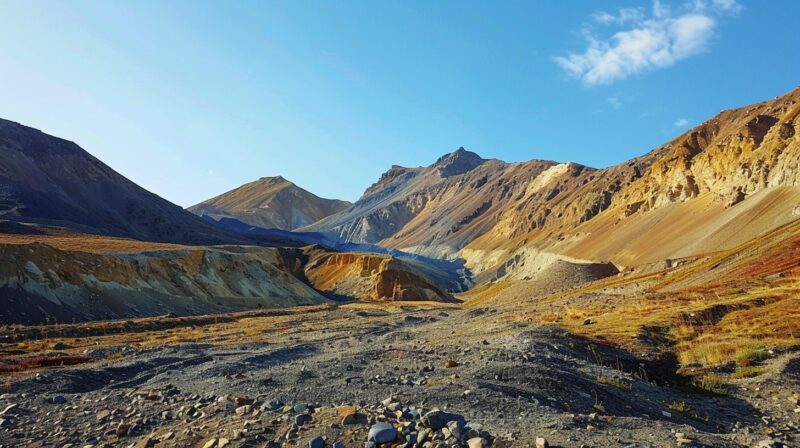
The geological landscape is a tapestry of rocky outcrops, steep cliffs, and deep valleys.
- Rock Formations: Unique and rugged, these formations tell the story of the region’s geological past.
- Cliffs and Valleys: Offering scenic vistas and challenging terrain for hikers and climbers.
The area is a living classroom for geology enthusiasts and students, providing a hands-on experience in understanding Earth sciences.

